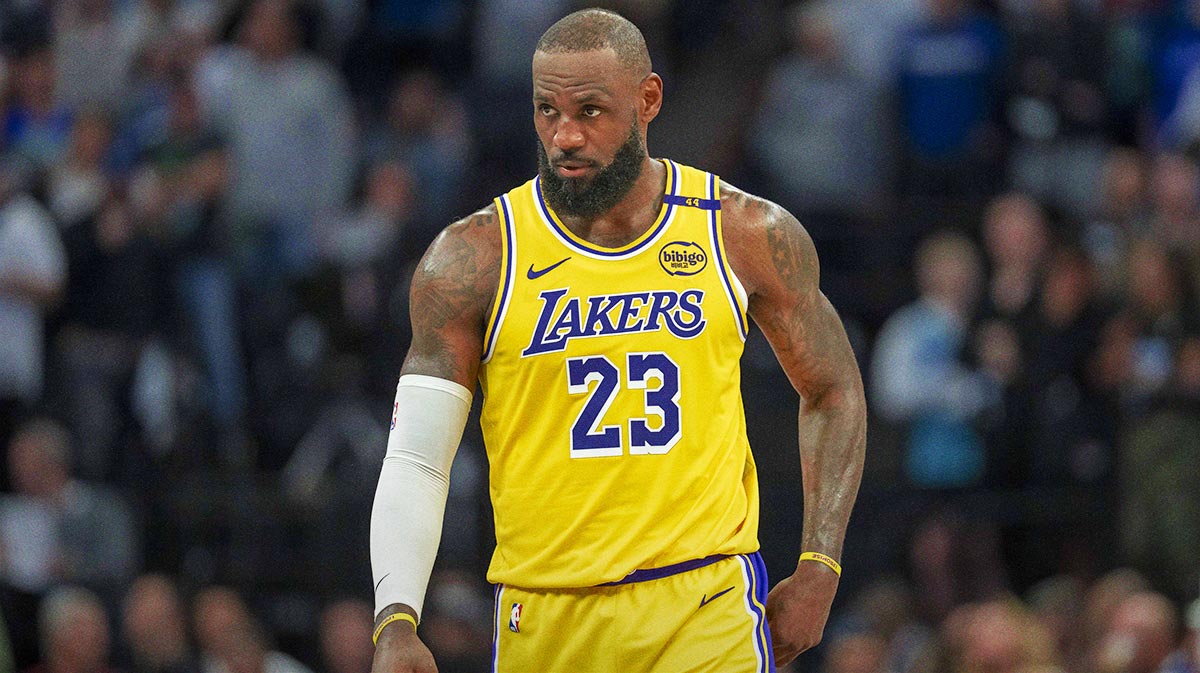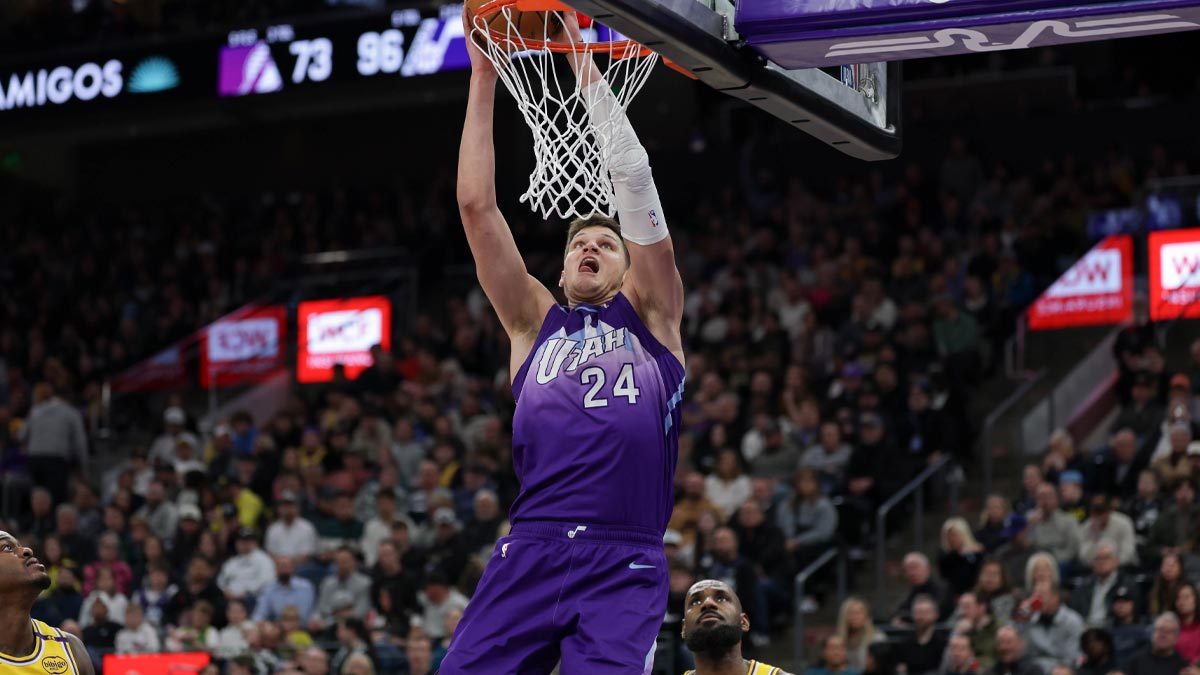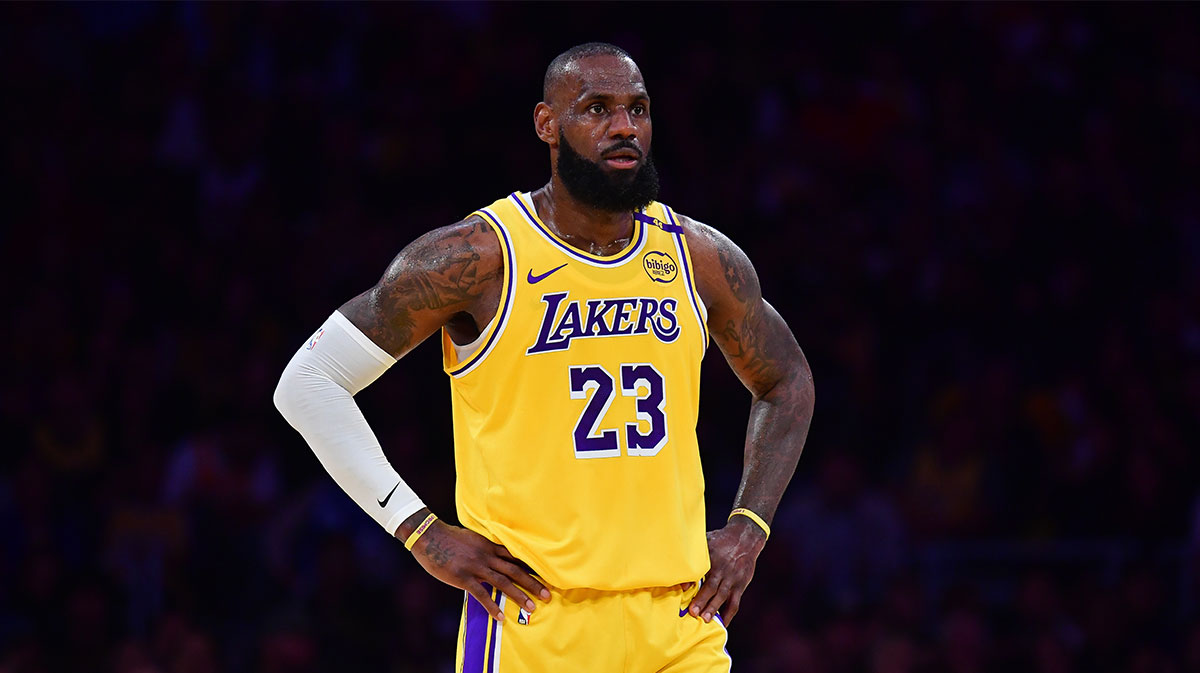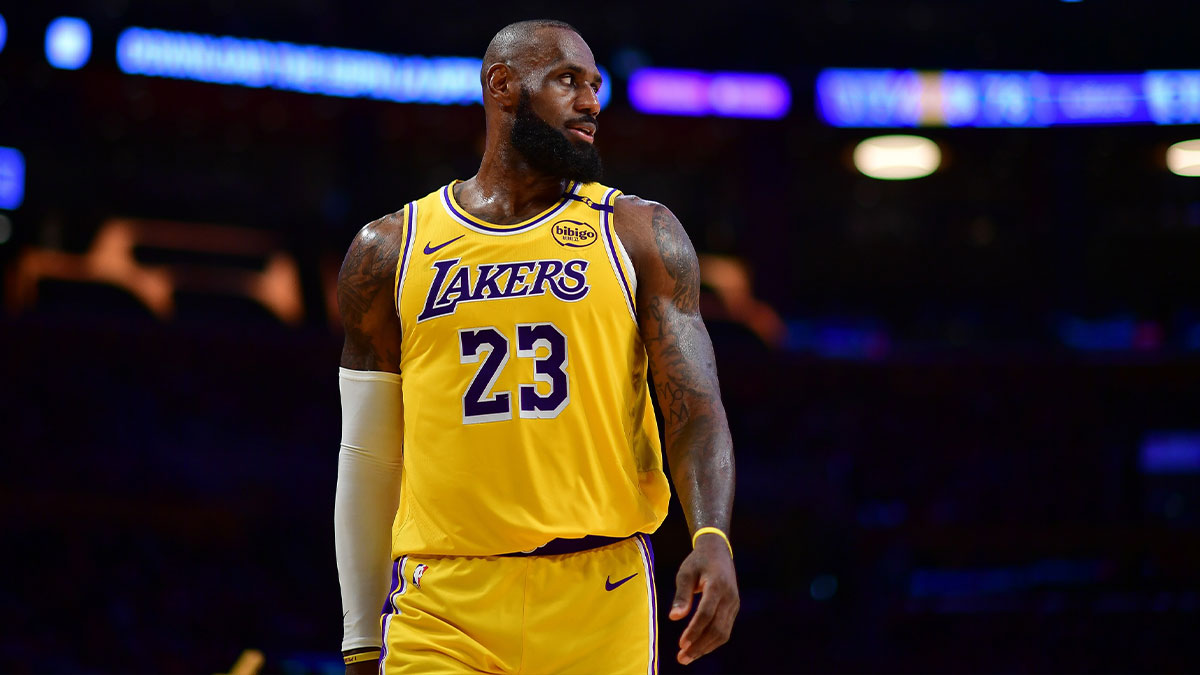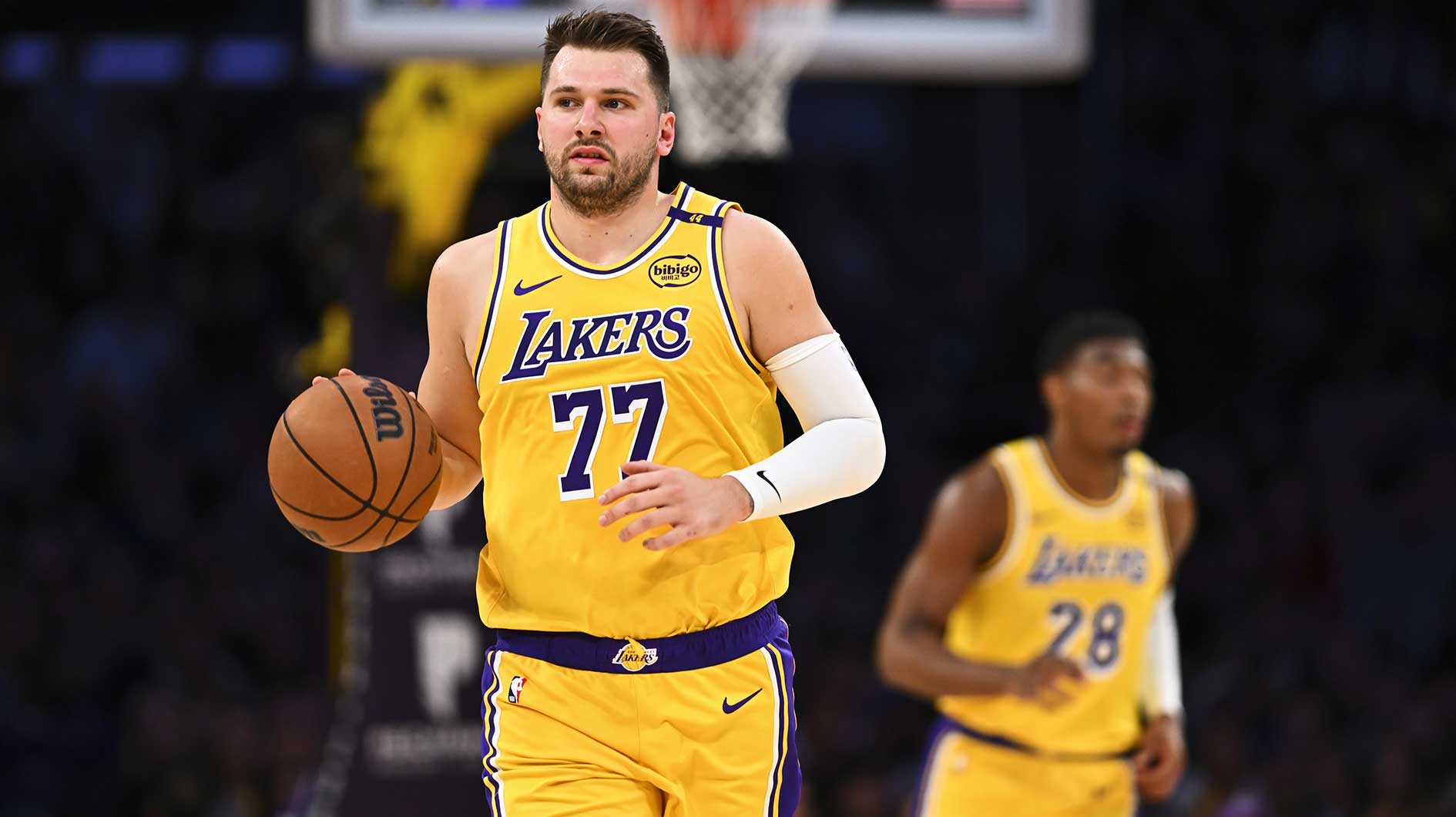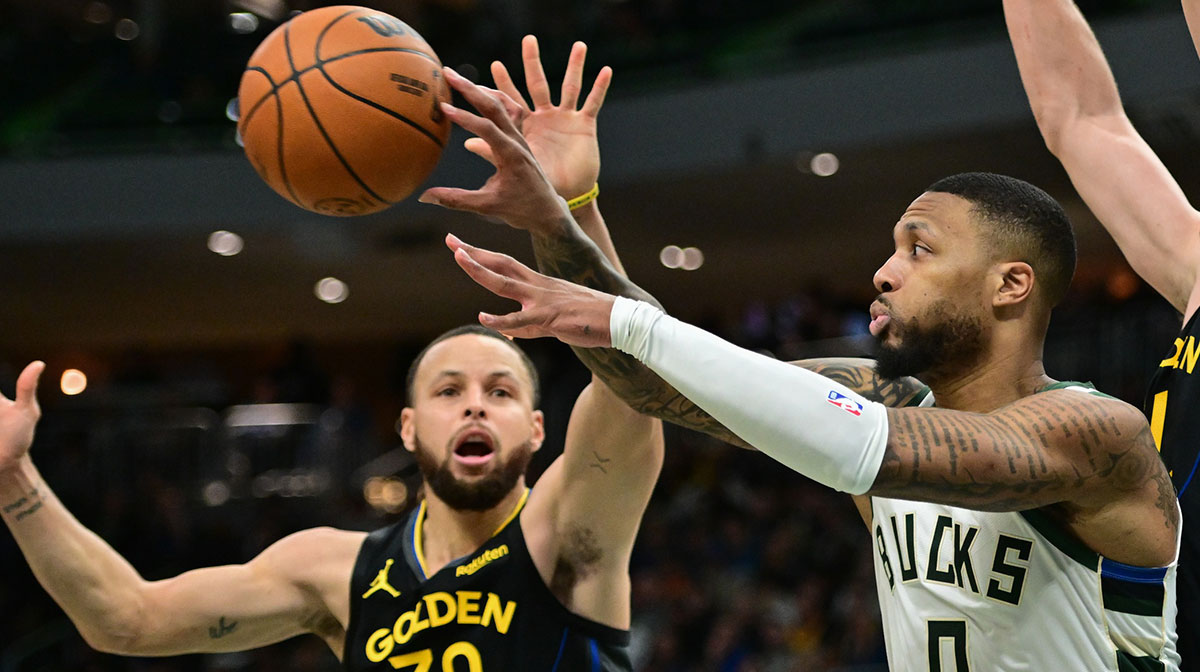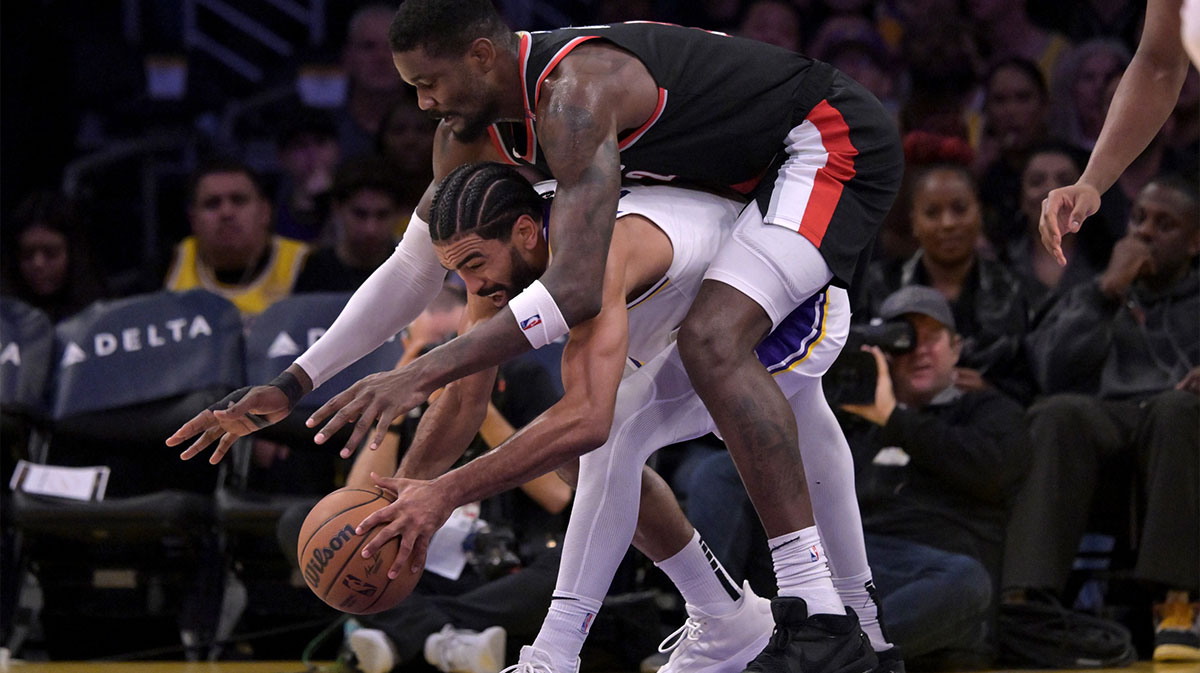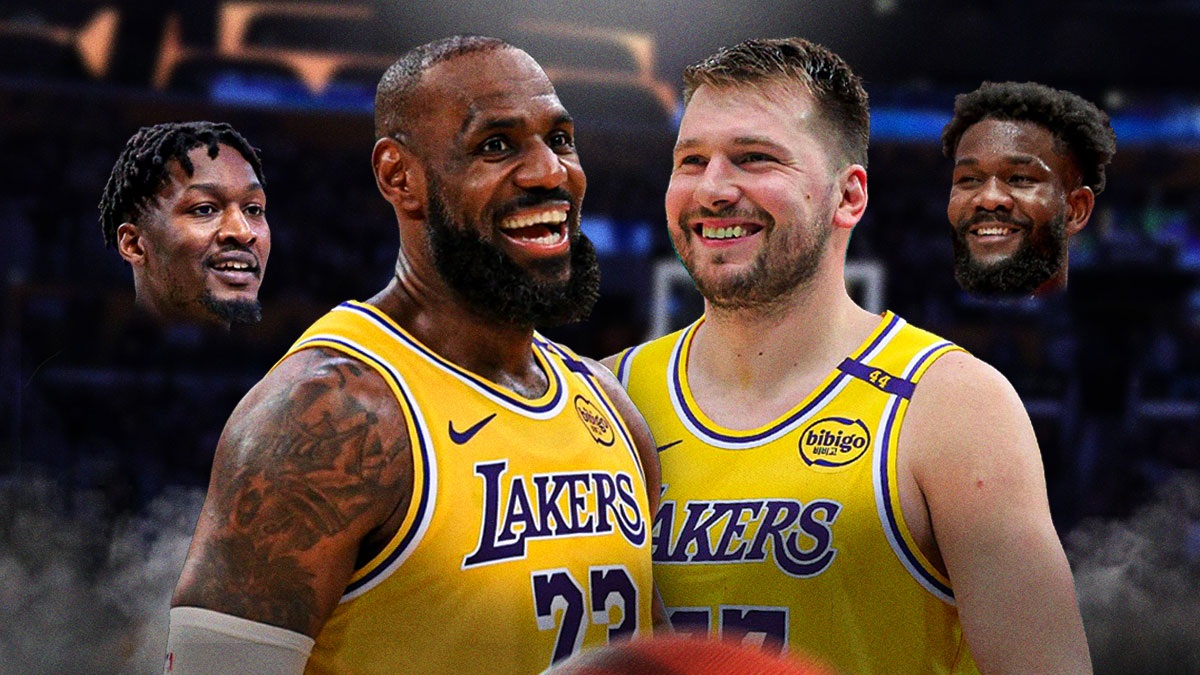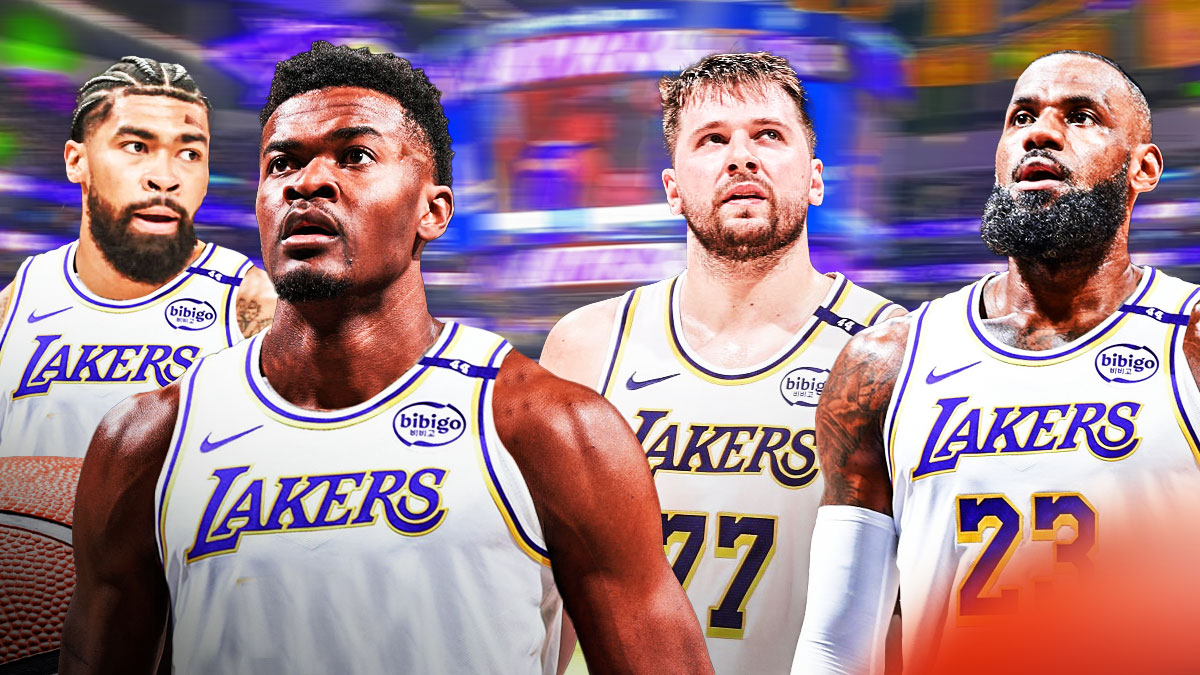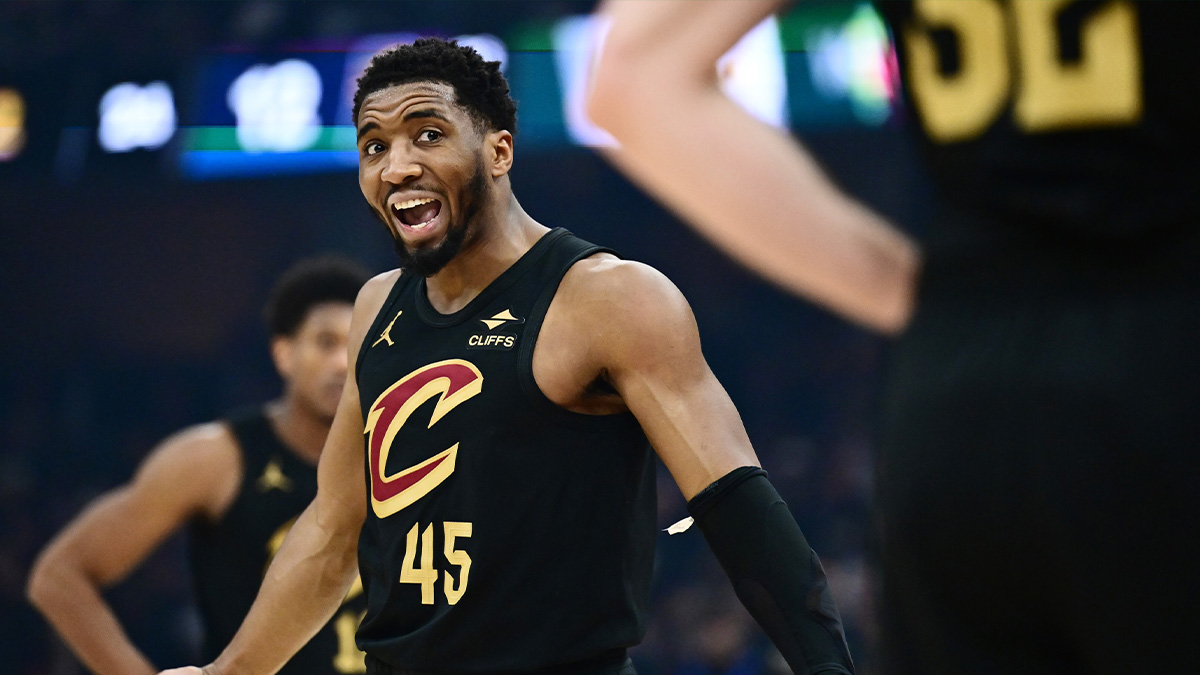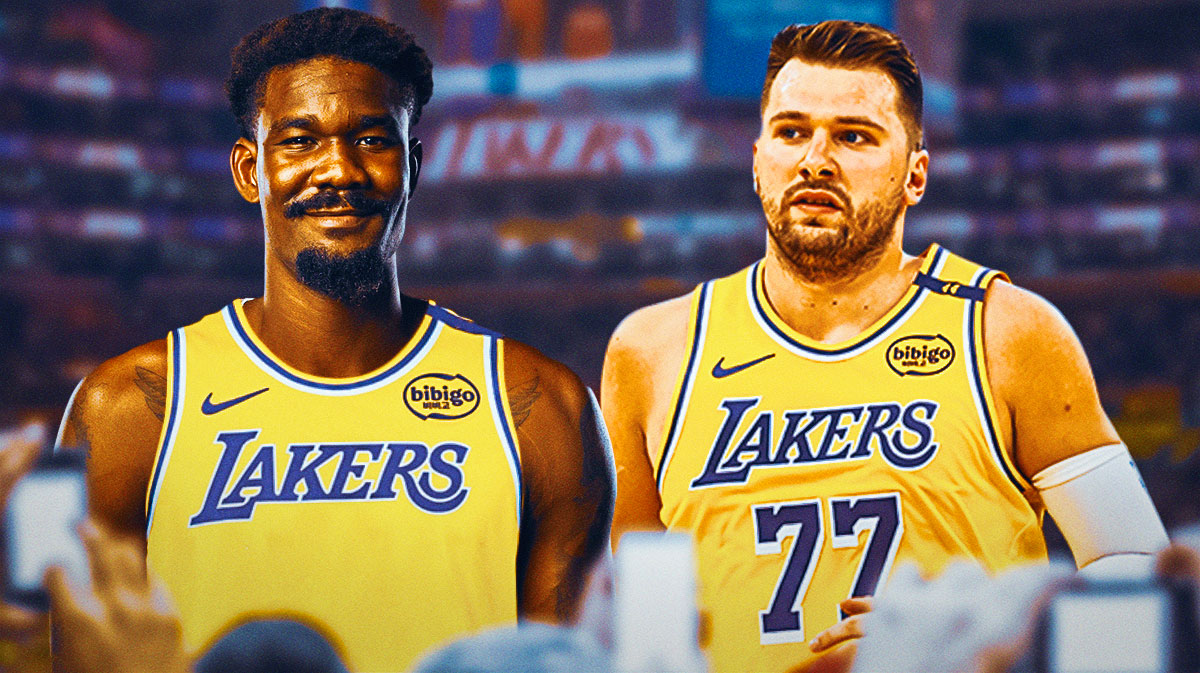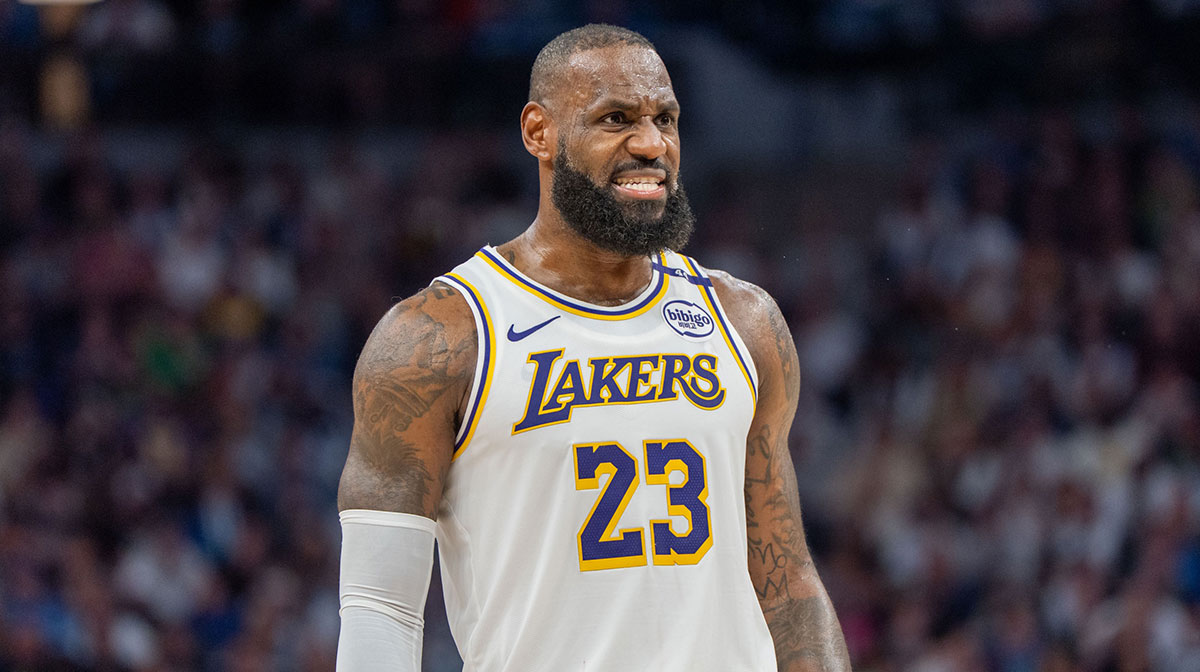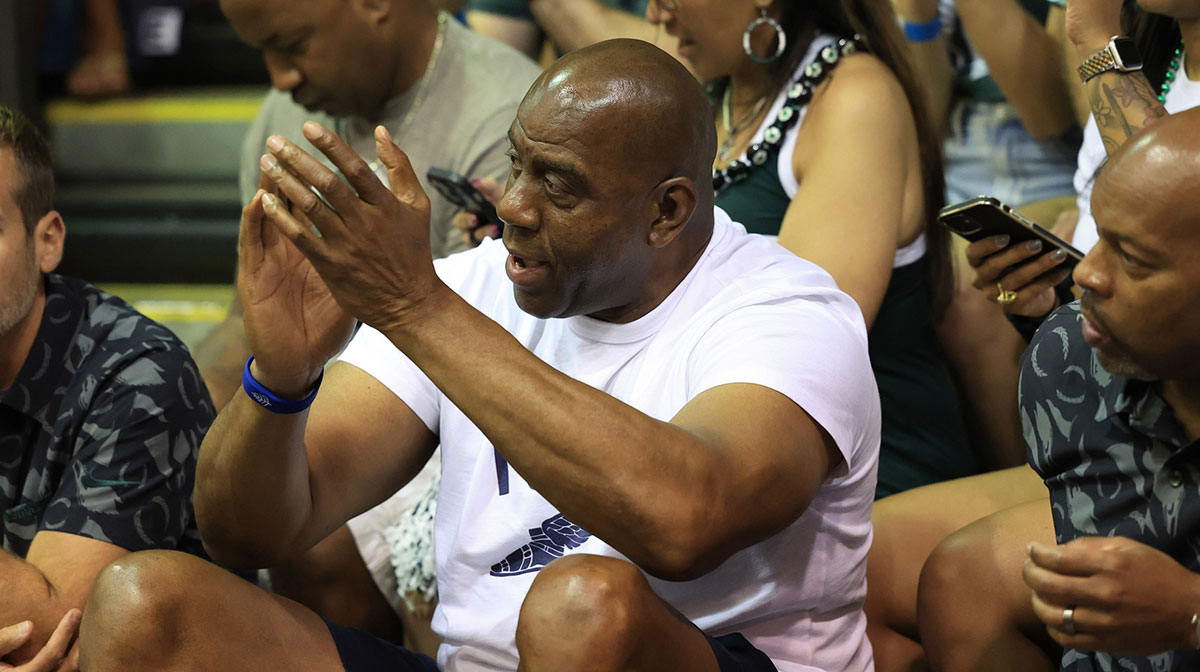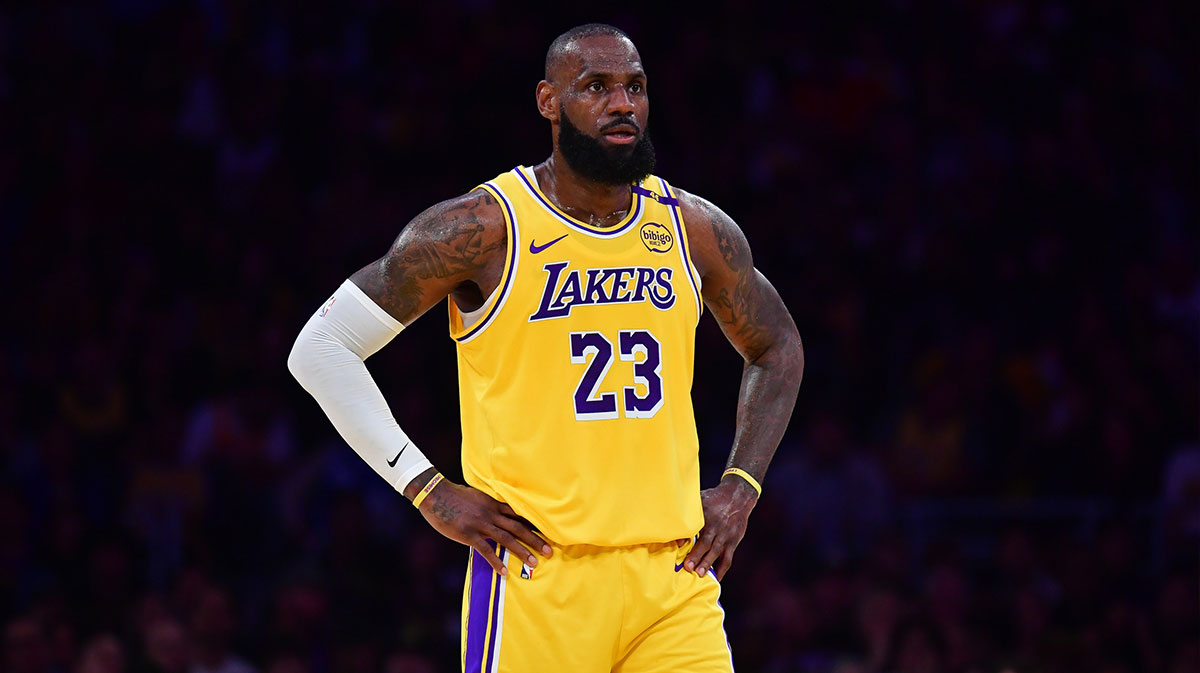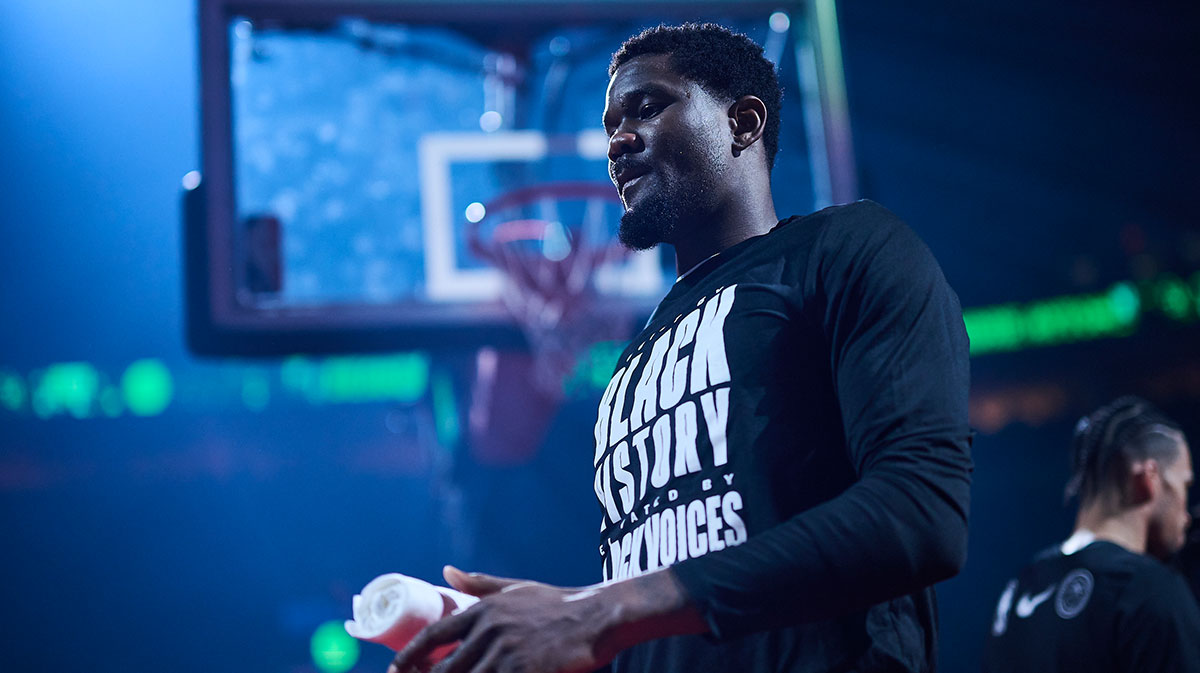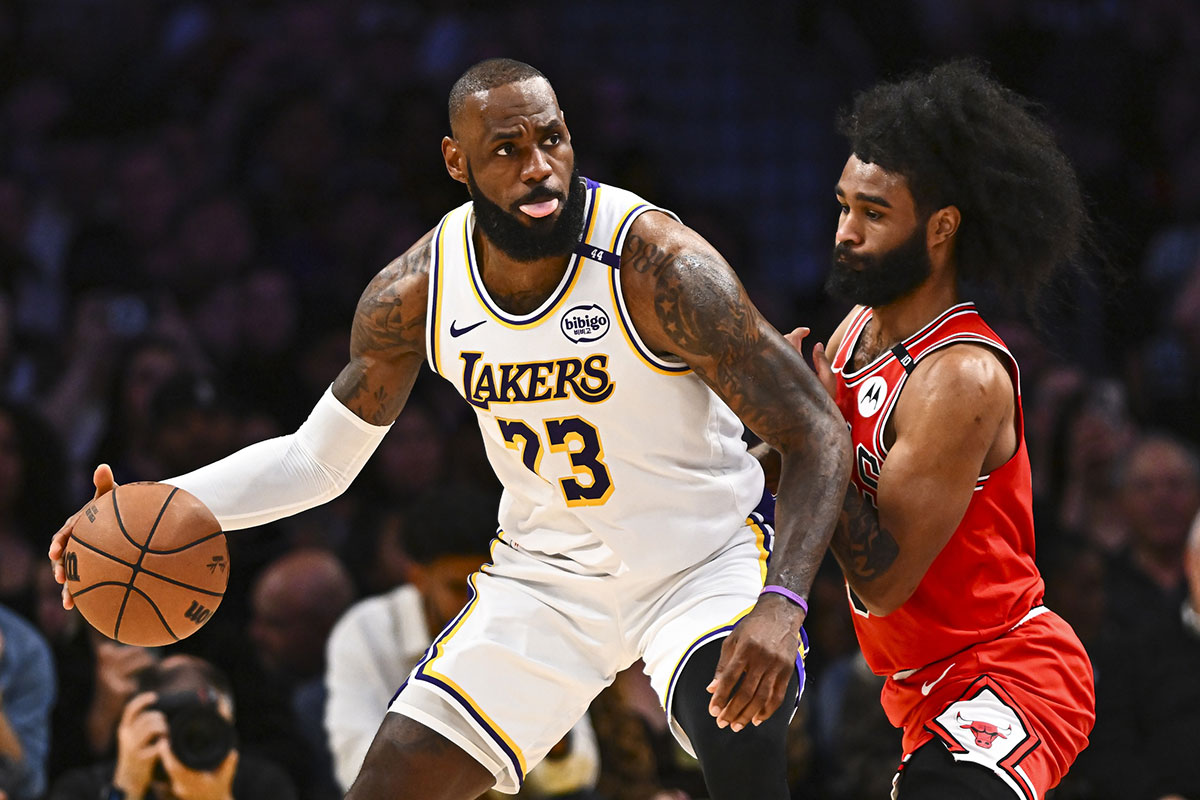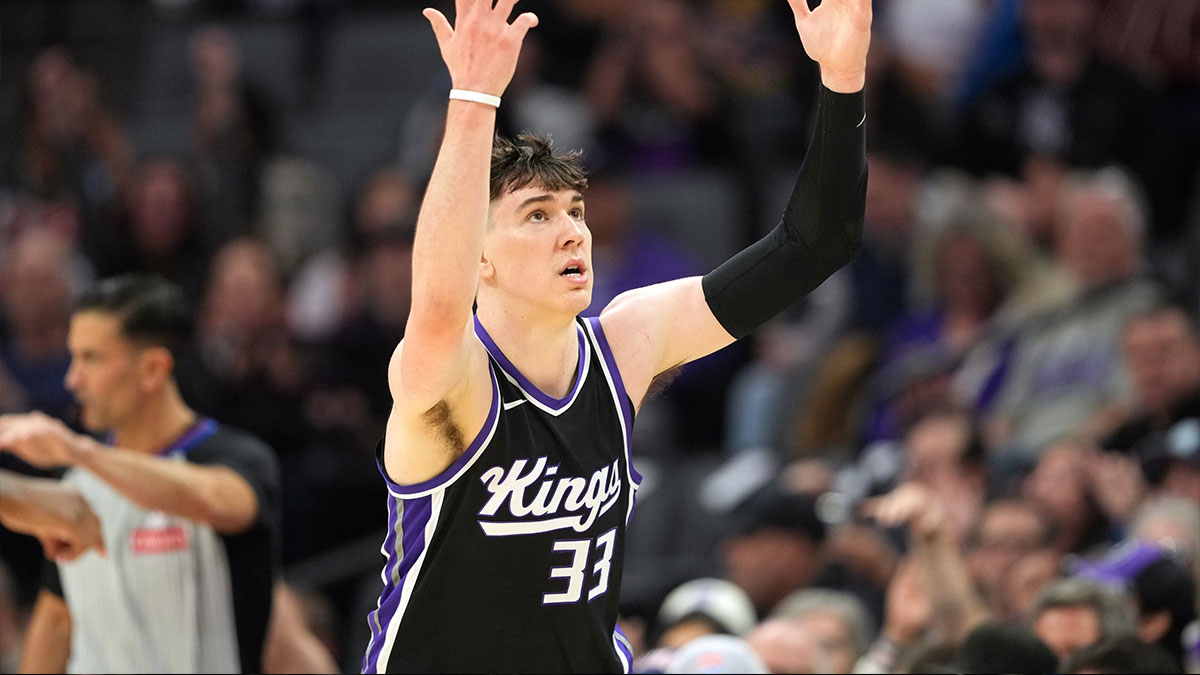The Los Angeles Lakers had the busiest and boldest offseason of any team in basketball. Perhaps that should surprise nobody.
Fresh off a disappointing first-round loss and an injury-riddled 2020-21 campaign, Lakers vice president of basketball operations Rob Pelinka utterly reshaped the roster around LeBron James and Anthony Davis. Only four players remain from last year's team, and one of them, Marc Gasol, looks unlikely to return after the acquisition of DeAndre Jordan.
James will begin his 19th NBA season on Oct. 19 — the second-to-last on his contract. Correspondingly, he will be surrounded by one of the most decorated opening night rosters in NBA history, featuring (arguably) six or seven future Hall of Famers and 60 (!) combined All-Star appearances (including Gasol).
The Lakers have also compiled one of the oldest squads of all time. Los Angeles employs 11 players over the age of 32 and six over the age of 35. Whether that ends up as a benefit or detriment may determine how many rings LeBron retires with.
“Wisdom is definitely a key to winning a championship,” Rajon Rondo said at his intro presser. “We have a lot of that obviously with the age and experience on the court … I’m looking forward to the naysayers saying about our age being a problem. But honestly, you don’t have longevity in this league without having discipline … We have the guys that have had the mileage, but at the same time, there’s a reason they’re still playing in this league at this level … So I’m not worried about anything, or spectators saying age makes a difference, I think the mind is going to be a big key in why we win this year.”
Per SportsCenter right now, Lakers could be 1st team in NBA history with 4 players who have each logged 1,000+ (regular season) games play on opening night pic.twitter.com/ZW1dJP4Bqm
— Michael Corvo (@michaelcorvo_) August 6, 2021
Pelinka also engineered the biggest trade of the NBA offseason thus far — a five-team blockbuster centered around Russell Westbrook.
And while the Lakers' 2021-22 roster will look exceedingly different, numerous familiar faces are back in the mix: Rondo, Dwight Howard, Kent Bazemore, Trevor Ariza, and Wayne Ellington took the veteran's minimum to return to the LakeShow.
Alex Caruso and Jared Dudley, sadly, were amongst the casualties.
Things should be mostly quiet on the Lakers front until training camp begins on Sept. 28. The Lakers will have two open roster spots if Gasol leaves, and will reportedly keep one free for a midseason buyout candidate. (Their two-way guys, Austin Reaves and Joel Ayayi, do not count on the 15-man active roster). They could add one more frontcourt piece on the minimum — perhaps a wing defender or stretch-4 — before the preseason.
They have long run out of cap space. Wesley Matthews, evidently, is not returning.
Before we look forward to what should be one of the more compelling and scrutinized seasons in recent memory, let's assess how Pelinka (and LeGM) did this summer, once and for all.
Did the Lakers improve where they needed to?
The Lakers' stated priorities entering the summer were three-point shooting and general perimeter play-making. And while not every move will create more space (see: Westbrook), the Lakers seem to have generally addressed those needs.
Ellington is coming off the best shooting season in a career full of them, and his off-ball movement will open up driving lanes for the stars.
I asked Wayne Ellington about his elite off-ball movement. He mentioned (not surprisingly) Rip Hamilton, Reggie Miller, and Ray Allen as inspirations, and believes his ability to create space for LeBron, Russ, and AD can be just as important to the Lakers as hitting 3s: pic.twitter.com/2VbDZYIePD
— Michael Corvo (@michaelcorvo_) August 6, 2021
Malik Monk finally showed his heat-check capabilities last season, and, at 23, is simply a steal on the minimum. Kendrick Nunn is a career 36.1% three-point shooter who can create looks from either guard spot (an upgrade from Caruso, in that sense). Carmelo Anthony shot 40% from downtown last season, mainly off catch-and-shoot opportunities. Bazemore set a career-high in 3-point percentage in 2020-21.
Their team-wide explosiveness, above-the-rim potential, and transition deadliness went up a level, even as their average age did, too. With Jordan and Howard, there should be a lot more lobs in Los Angeles this year (Lob Angeles? Bueller?).
Yes, their wing defense took a hit — I'm surprised they haven't brought back Matthews, much less Caruso — but Vogel has worked defensive wonders throughout his career. The Lakers bolstered their frontcourt formidability with Ariza, Bazemore, and Howard, and — barring good health — have what it takes to be an elite defensive squad when it counts. How often LeBron and AD actually slide to 4 and 5, respectively, will be a major X-factor.
In the locker room, the Lakers lost valuable voices in Dudley, Matthews, Markieff Morris, and Kentavious Caldwell-Pope. (The same cannot be said for the departed Dennis Schroder, Montrezl Harrell, and Andre Drummond.) For a host of reasons, the 2019-20 squad benefited from better vibes than last year's group, and bringing back Howard and Rondo may help recreate that chemistry.
The Russell Westbrook trade
We already analyzed the Russ trade, so I'll refer you there. Frankly, it's impossible to evaluate until the postseason, when Westbrook's impact has historically been negated as the game slows down, teams make adjustments and everybody ups their effort level to his.
Still, the acquisition is understandable. The L.A.-native remains an All-Star-caliber player and elite havoc-wreaker, plus a beloved teammate who sets an awesome day-to-day example from the instant he shows up at the facility. (Related: he averaged 22.2/11.5/11.7 last season.)
The Lakers gave up useful pieces (Kyle Kuzma, KCP, Harrell, a first-round pick) for Westbrook and the $91 million left on his contract, but not anything too essential (no offense, Kuz). Above all else: LeBron (and AD) wanted him, which outweighed any pro-Buddy Hield opinions in the front office.
The Westbrook trade could be a bomb, a smash hit, or anywhere in between.
The Lakers remedied a few mistakes
The Schroder trade made sense on Nov. 18, 2020, even if Danny Green and a first-round pick held real value. It just didn't work out. Schroder failed to establish an on-court rapport with Anthony Davis, nor did he make his teammates better. His testiness about the vaccine and his contract became a simmering distraction, and his untimely bout with COVID-19 was crippling.
With hindsight, the Lakers would have re-signed Rondo and kept Green. At least they dodged an $84 million bullet.
The decision not to retain Howard was quizzical at the moment (and clearly surprised Dwight) and was further exacerbated by the unsuccessful Drummond experiment. Now, one year after the bubble title run, Rondo and Howard are, rightfully, Lakers, again.
What did they do wrong?
The sheer volume of changes and possibilities will make it hard to gauge the efficacy of the roster construction for months.
On paper, the Lakers have impressive depth — but do they have too many rotation-caliber players? All the talk of sacrifice for a parade is welcome, but will everything truly go smoothly when accomplished vets and/or younger players with something to prove weather stints out of the rotation?
The Lakers smartly re-signed Talen Horton-Tucker at a reasonable price (their relationship with Rich Paul paid dividends once again, evidenced by Harrell's cooperation in the Westbrook deal, too). On the other hand, skimping on Caruso for luxury tax reasons is confounding. Gasol is a better player and fit than Jordan, so that swap would be a net-negative, should it come to pass.
All that said: considering the cap constraints and lack of trade assets to work with, Pelinka found a way to field a star-studded, deep, and versatile roster around LeBron and Davis, and greatly boost the team's long-range potential. Rightfully, they are the favorites to win the Western Conference.
Now, all that's left is the basketball.
Lakers' Offseason Grade: A-

